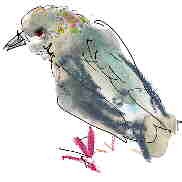Norman
Allan | ||||
| Cracking Joints: Chiropractic's Audible Release by Norman Allan DC PhD
When you crack your knuckles, or when a chiropractor clicks your spine, a little gas bubble appears in the joint: a bubble of air, of nitrogen, vaporizes out from the synovial fluid. On X-rays this appears like a small "cavity", so the process is called "cavitation". Chiropractors have been taught that cavitation, the appearance of a gas bubble, is what causes the "cracking" noise in joints, but this is in fact only part of the story, and a silent part at that. Cavitation is a 'partial vacuum' phenomenon. If you take a partially filled syringe and block its end (with a finger) and then pull back quickly on the plunger to create a cavitation, you will observe that the cavitation is soundless. Cavitation, though, is indeed a part of the mechanism that creates the noise. Cavitation shows us that during the chiropractic adjustment the volume of the joint increases suddenly from, say, x to x + y (where y is the 'cavity'). This sudden distention"snaps" the joint capsule. Hold a piece of paper at its two ends. Bring your hands together to create a fold in the paper, and then pull them smartly apart. The paper "cracks". Similarly, the sudden distention accompanying cavitation snaps the joint capsule. Because there is gas, from the cavitation, on one side of the snapped membrane, the capsule act a little like a drum and gives us the cracking noise. The
distention of the joint also allows for its repositioning. If the joint was out
of place (in medicaleze this is called a "subluxation") and if the thrust
that is causing the distention of joint is in an appropriate direction, joints
can be realigned and the realigned joint will function better. When a joint is
out of place you are going to be in a little or a lot of trouble, so repositioning
the joint can be a great relief.
Of course, Howie is right that there is no good scientific evidence for repositioning. It is rather a matter of belief and of doctrine and dogma; the Gonstead doctrine and dogma. I believe that when I adjust a vertebra from posterior to anterior, nudging it forward, I can feel it move, and if you came into my office as a patient, I believe you would feel and believe so too. And, in a doctrinal fashion, I believe this repositioning, nudging of the vertebra back into place, is an essential part of the miracle and magic of chiropractic. Think of the subluxation of a finger joint playing basketball or volley ball. Agony until the subluxation is "reduced". There, surely, we are repositioning. To which Howie commented, "I guess I agree with you in a casual way, but I prefer to think of the problem as a joint stuck in a malposition, but still within its normal range. The adjustment should, theoretically, be directional, but only so far as that frees the motion to restore its proper neutral zone. Don't forget that any motion from the neutral is "malposition" if you get stuck there. My motto is that the effect of a manipulation is to restore the ability of the joint to malposition!?" |
 |